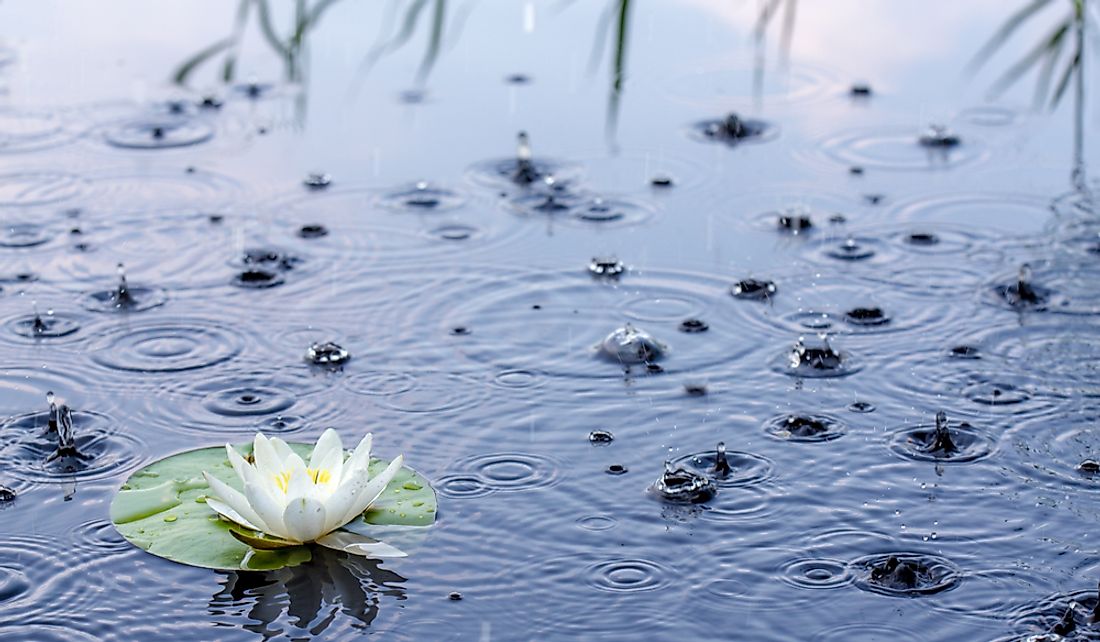Is Precipitation The Source Of All Fresh Water On Earth?

Earth is commonly referred to as the Blue Planet while trying to distinguish it from the rest of the planets. The color is attributed to the fact that 71% of the surface of our planet is covered with water. Despite the seeming abundance of water on the planet only a small fraction of the Earth is covered with fresh water. An even smaller fraction is available for human use. About 97% of the total amount of water on the planet is sea water which has high salt concentration. Fresh water can be described as water with a salt concentration of less than 1%. Most of the world's fresh water is found in the form of glaciers and ice caps or underground water. Much of Earth's available fresh water comes from precipitation.
Surface Freshwater
About 75% of fresh water in the world is found in the form of frozen glaciers and ice sheets. Most of these forms of fresh water are mostly inaccessible, and they do however release water in varying amounts seasonally over long periods. Other surface freshwater sources include lakes, rivers, ponds, streams, reservoirs, and wetlands. These sources only account for 0.3% of the Earths fresh water. They provide the primary source of drinking water, recreation, irrigation, and inland transportation.
Underground Water
Underground water is a vital source that contains nearly 96% of liquid fresh water. It feeds streams, springs and supports wetlands. Arid and semiarid areas are reliant on underground water sources which provide about 60% of the water used for irrigation. An estimated 25% to 40% of drinking water in the world also comes from underground sources. Underground water is held in aquifers which vary in terms of the amount of water they hold, the depth, and the rate of at which they replenish. It is important to note that water from most underground sources is replenished very slowly and is therefore termed as a non-renewable water source. Some aquifers, however, replenish very quickly and can be used for irrigation and other purposes without worrying that they might run out in the future.
Precipitation
Precipitation can be described as water that is formed in the atmosphere and then falls to the surface. Some of the most common forms of precipitation include rain, snow, drizzle, sleet, and hail. About 40% of the water available for precipitation is from the evaporation of ocean water while the rest is from land. Precipitation provides a significant amount of fresh water on Earth but is however not evenly distributed in all regions on the planet. About three-quarters of the world's total rainfall occurs in areas containing less than 30% of the world's population. Temperate and Equatorial areas receive the highest precipitation while other regions such as the Sahara and other deserts receive little to no precipitation. Nearly 80% of water runoff on earth is in countries in equatorial and northern regions.
The Effect Of Climate Change
In recent years scientists have raised the alarm over the rate at which glaciers are melting. The melting of glaciers is primarily linked to global warming. The increased amount of fresh meltwater not only leads to the rise in global sea levels but also pushes down the denser salt water leading to changes in the Thermohaline Circulation (THC) which affects the immediate area in the short term and other areas in the long term. The dilution of seawater also significantly affects the habitat of sea creatures.











